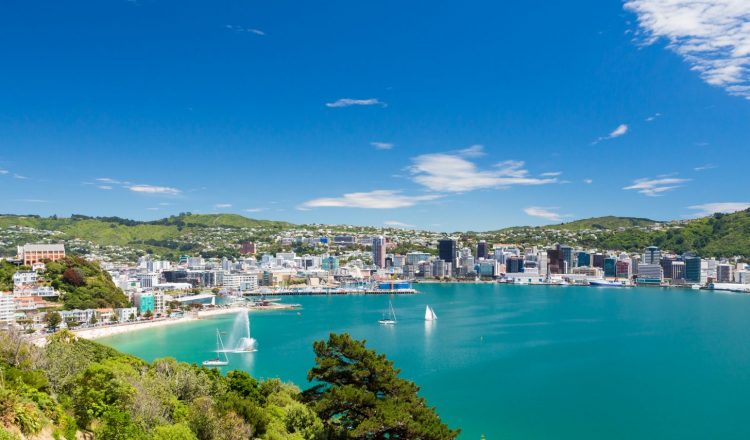더 나은 삶
추운 GDP와 경제 통계보다 삶에 더 많은 것이 있습니다. OECD Berter Life Index를 사용하면 OECD가 물질적 생활 조건과 삶의 질 영역에서 필수적인 것으로 확인한 11가지 주제를 기반으로 국가 간 복지를 비교할 수 있습니다.
뉴질랜드는 더 나은 라이프 지수 (Better Life Index) 의 다른 대부분의 국가에 비해 많은 웰빙 측정에서 잘뉴질랜드는 건강 상태, 소득 및 부, 환경 품질, 개인 안전, 시민 참여, 주택, 주관적인 복지, 교육 및 기술, 일자리 및 수입, 사회적 연결 면에서 평균보다 높은 수준이지만 일과 삶의 균형면에서 평균 이하입니다.이러한 순위는 사용 가능한 선택된 데이터를 기반으로 합니다.
돈은 행복을 살 수는 없지만 더 높은 생활 수준을 달성하는 데 중요한 수단입니다.뉴질랜드에서는 1인당 가계 순 조정 가처분 소득이 연간 OECD 평균 미화 33 604달러보다 낮습니다.
고용 측면에서 뉴질랜드에서 15세에서 64세 사이의 77% 가 OECD 고용 평균 68% 를 초과하는 유급 직업을 가지고 있습니다.남성의 82% 는 여성의 72% 와 비교하여 유급 업무에 종사하고 있습니다.뉴질랜드에서는 직원의 15% 가 OECD 평균 11% 보다 매우 긴 시간 동안 근무하며, 남성의 21% 는 여성의 9% 에 비해 매우 오랜 시간 근무하고 있습니다.
훌륭한 교육과 기술은 직업을 찾는 데 중요한 요건입니다.뉴질랜드에서는 25-64세 성인의 79% 가 OECD 평균 78% 이상으로 중등 교육을 마쳤습니다.남성의 78% 가 여성의 79% 에 비해 고등학교를 성공적으로 마쳤기 때문에 이것은 남성보다 여성보다 약간 진실합니다.교육 시스템의 품질 측면에서, 평균 학생은 OECD 국제 학생 평가 프로그램 (PISA) 에서 읽기 능력, 수학 및 과학에서 506을 기록했습니다.이 점수는 OECD 평균 486보다 높습니다.뉴질랜드에서 평균적으로 소녀들은 평균 OECD 간격보다 2 점보다 6 점보다 남학생을 능가했습니다.
건강 측면에서 뉴질랜드에서 출생시 평균 수명은 82 세이며 OECD 평균 80 년보다 2 년 더 높습니다.여성의 평균 수명은 83세이며 남성의 경우 80년입니다.대기 PM2.5의 수준은 진입하여 폐에 손상을 줄 정도로 작은 대기 오염 물질 입자 – 입방 미터당 4.9 마이크로 그램으로, 입방 미터당 평균 13.9 마이크로 그램의 OECD 평균보다 상당히 낮습니다.뉴질랜드는 89% 의 사람들이 OECD 평균 81% 보다 높은 수질에 만족한다고 말하면서 수질 측면에서도 잘 작동합니다.
공공 영역과 관련하여 뉴질랜드에 대한 강한 공동체 감각과 높은 수준의 시민 참여가 있습니다. 96% 의 사람들은 OECD 평균 89보다 필요한 시간에 의지 할 수있는 사람을 알고 있다고 생각합니다.정치 과정에 시민들의 참여 척도인 유권자 투표율은 최근 선거에서 80% 였으며 OECD 평균 68% 보다 높았다.인구의 상위 20% 에 대한 유권자 투표율은 97% 로 추정되는 반면, 하위 20% 의 참여율은 85% 로 추정됩니다.이 차이는 13퍼센트 포인트의 OECD 평균 차이보다 약간 좁습니다.
일반적으로 뉴질랜드 사람들은 OECD 평균보다 자신의 삶에 더 만족합니다.뉴질랜드는 0에서 10까지의 규모로 삶에 대한 일반적인 만족도를 평가하도록 요청했을 때 평균 7.3 등급을 OECD 평균 6.5보다 높았습니다.

















































